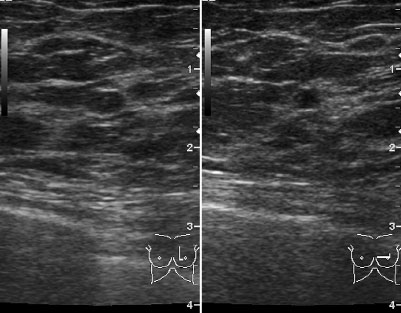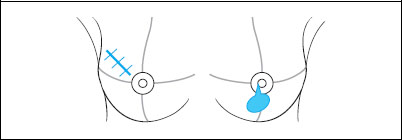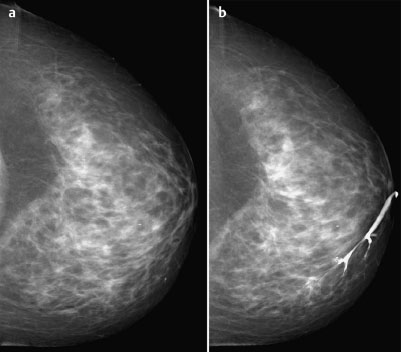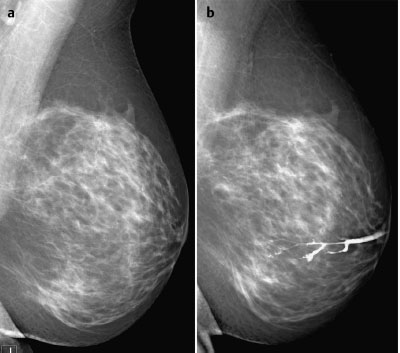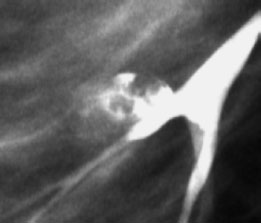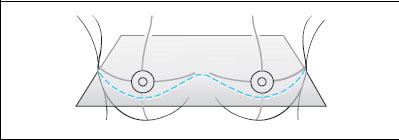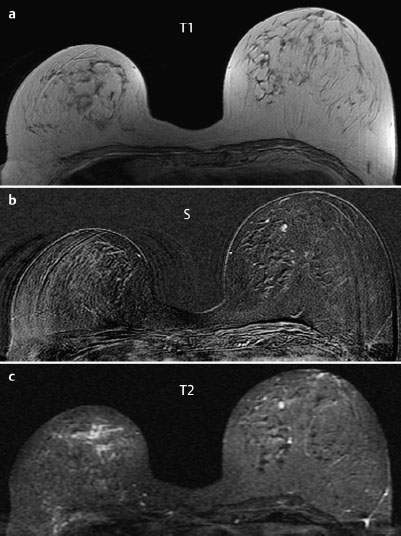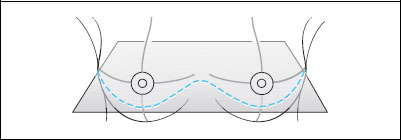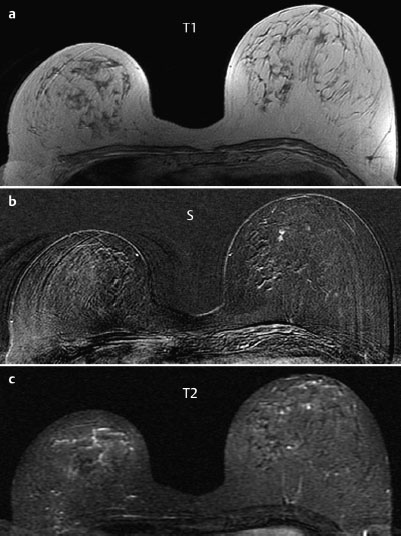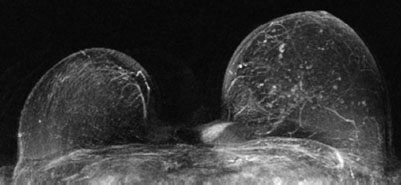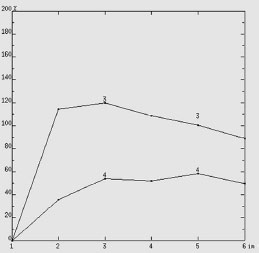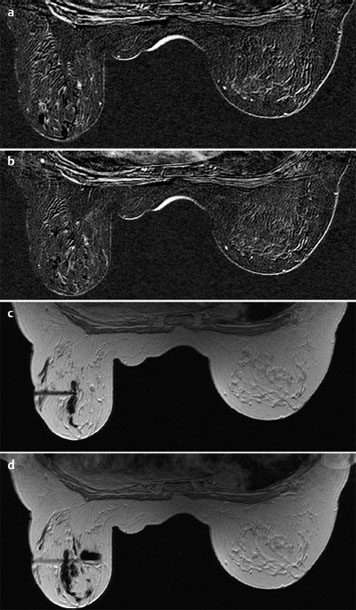MRM score | Finding | Points |
Shape | round | 0 |
Border | ill-defined | 1 |
CM Distribution | homogenous | 0 |
Initial Signal Intensity Increase | strong | 2 |
Post-initial Signal Intensity Character | wash-out | 2 |
MRI score (points) |
| 5 |
MRI BI-RADS | 4 |
 Differential Diagnosis
Differential Diagnosis
Papilloma, adenoma, fibroadenoma, carcinoma.
BI-RADS Categorization | ||
Clinical Findings | right 1 | left 3 |
Ultrasound | right 1 | left 3 |
Mammography | right 1 | left 3 |
MR Mammography | right 1 | left 4 |
BI-RADS Total | right 1 | left 4 |
Procedure
Histological analysis of the galactography findings in the lower inner quadrant of the left breast. MR-guided percutaneous vacuum biopsy with the objective of complete extraction of the lesion as a diagnostic and therapeutic intervention (Figs. 43.9 and 43.10).
Fig. 43.10a First biopsy specimen containing a round nodular structure (arrow).
Fig. 43.10 b Complete set of 20 biopsy specimens ready for dispatch to histology lab.
Histology
Completely removed intraductal papilloma (extracted in the very first core specimen (see Fig. 43.10a). No malignancy.
Intraductal papilloma.
Stay updated, free articles. Join our Telegram channel

Full access? Get Clinical Tree


